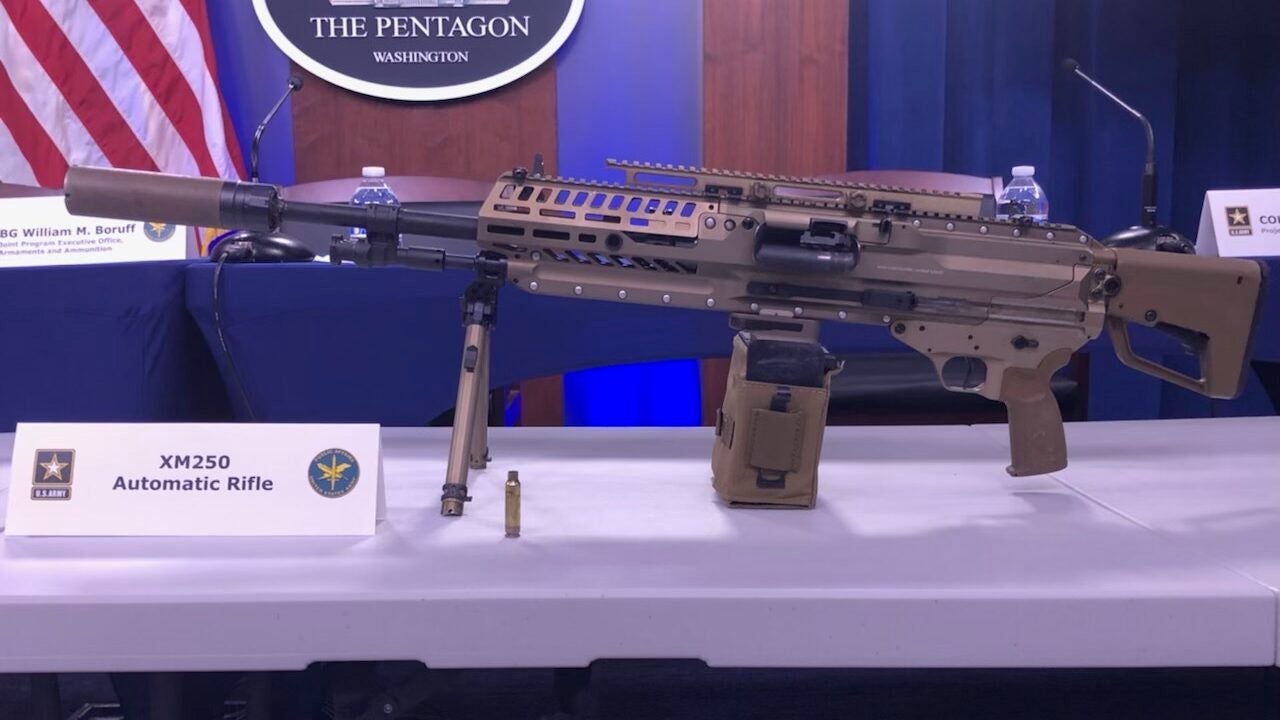
The Army has chosen its Next Generation Squad Weapon rifle and light machine gun variants, but one company isn’t pleased with the service’s decision to go with Sig Sauer.
LoneStar Future Weapons filed a protest bid with the Government Accountability Office on May 18. Further details were not provided in the bid protest, and the Army, Sig Sauer, and LoneStar Future Weapons either did not respond or declined to comment.
LoneStar’s design featured a “bullpup” configuration, in which the magazine is behind the trigger control assembly, as well as a reciprocating barrel that moves backward with each shot to absorb recoil. It also featured composite 6.8 mm ammunition made by True Velocity, which is an average of 30% lighter than brass cartridges.
[embedded content]
In April, the Army chose Sig Sauer for the Next Generation Squad Weapon, ultimately replacing the M4 and M249 Squad Automatic Weapon for soldiers who serve in frontline military occupational specialties. The company will build the XM-5 rifle and XM-250 Automatic Rifle and the 6.8 mm ammunition that they chamber. The Army ultimately plans to buy 107,000 M5 rifles and 13,000 M250 machine guns, as well as all of the 6.8 mm ammunition from Sig Sauer for the next several years, for a total cost of $4.7 billion.
Weighing about 8.3 pounds, the XM-5 is slightly heavier than the M-4, although the machine gun variant, at 12 pounds, is significantly lighter than both the M-249 and M-240 machine guns.
The new Sig Sauer design chambers a 6.8 x 51 mm round with a maximum chamber pressure of 80,000 pounds per square, extending the weapon’s range without needing a longer barrel or heavier ammunition.
Sig Sauer President and CEO Ron Cohen told Task & Purpose in January that his company’s design for the Next Generation Squad Weapon could fire up to 12,000 rounds before needing to change barrels, whereas soldiers typically need to replace the barrels on their M4 carbines after firing 6,000 rounds.
The search for a new weapons system and new ammunition dates back to 2017, when, following a study into small arms ammunition, then-Army Chief of Staff Gen. Mark Milley told Congress that body armor as cheap as $250 could stop the 5.56 mm rounds fired by the M4 and M249.
“More than 500 Soldiers, Marines and special operations soldiers contributed to 20,000 hours of user feedback,” which led to the Army’s ultimate decision, Brig. Gen. Larry Burris, commandant of the Army infantry school at Fort Benning, Georgia said in April,
The latest on Task & Purpose
Want to write for Task & Purpose? Click here. Or check out the latest stories on our homepage.
